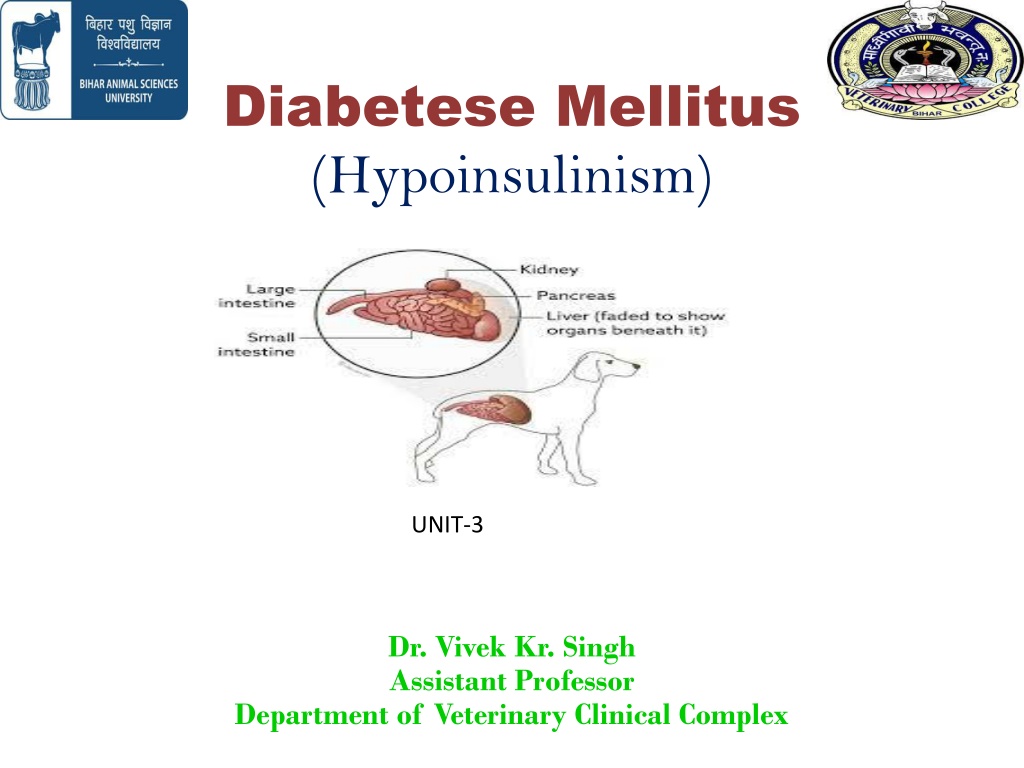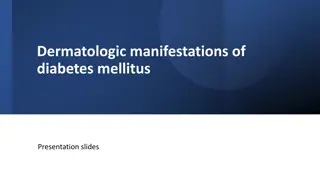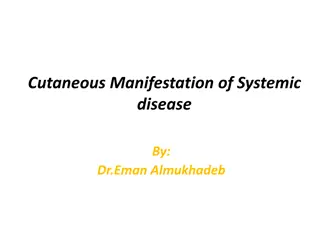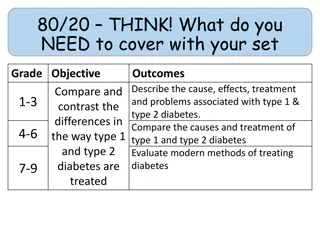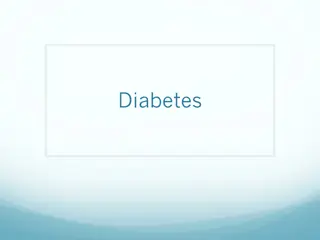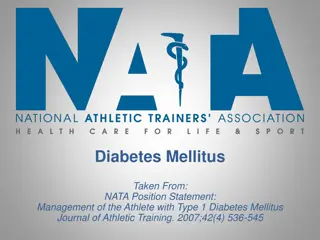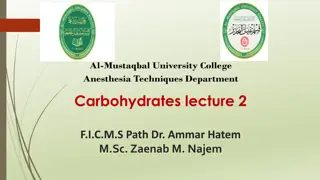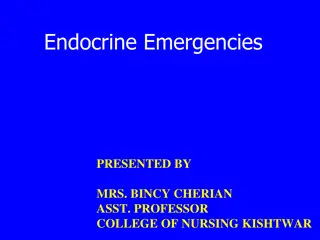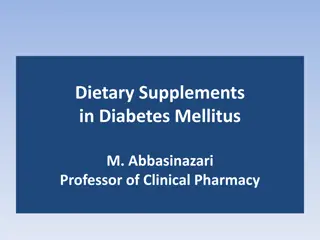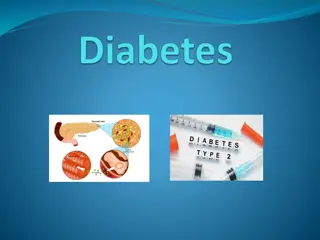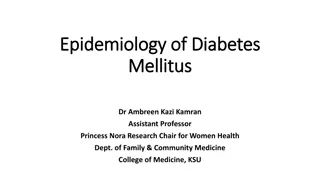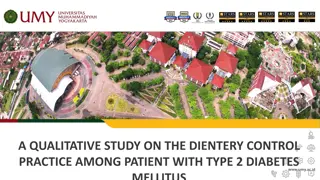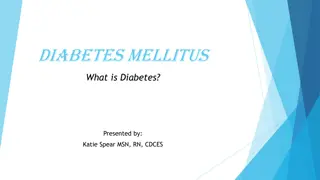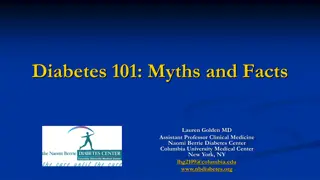Understanding Diabetes Mellitus in Dogs: Causes, Symptoms, and Treatment
Diabetes mellitus is a common endocrine disorder in dogs, characterized by symptoms like polyuria, polyphagia, and cataract development. The etiology involves insulin deficiency and insulin resistance, leading to hyperglycemia and various clinical manifestations. Diagnosis is based on symptoms, glycosuria tests, and blood glucose levels. Treatment includes diet modification, insulin supplementation, and oral hypoglycemic agents to manage blood glucose levels effectively.
Download Presentation

Please find below an Image/Link to download the presentation.
The content on the website is provided AS IS for your information and personal use only. It may not be sold, licensed, or shared on other websites without obtaining consent from the author. Download presentation by click this link. If you encounter any issues during the download, it is possible that the publisher has removed the file from their server.
E N D
Presentation Transcript
Diabetese Mellitus (Hypoinsulinism) UNIT-3 Dr. Vivek Kr. Singh Assistant Professor Department of Veterinary Clinical Complex
Diabetes mellitus is an endocrine disorder, characterized by polyuria, polyphagia, loss of body condition and development of cataract
Etiology Insulin deficiency Deficiency of insulin Absolute insulin deficiency Relative insulin deficiency Destruction of - cells (Due to certain viruses, Immune-mediated destruction, Pancreatitis ) Due to development of insulin resistance Type-II/Non-insulin dependent diabetes mellitus Type-I / Insulin dependent diabetes mellitus (IDDM)
Diabetes is more common in middle-aged dogs of 4-14 years (Highest at 7-9 yrs) Females are more affected compared to males Poodles, Daschunds, Terrier and Beagle breeds are more susceptible
Pathogenesis Cellular hypoglycaemia Glucose utilization is insulin dependent Insulin deficiency Hyperglycemia Stimulation of satiety centre Gluconeogenesis Blood glucose crosses renal threshold (175- 220mg/dl) Polyphagia Glycosuria Accumulation of Mobilization of Fat depots Ketone bodies Glycosuria creates osmotic diuresis Polyuria Diabetic ketoacidosis Cachexia Polydipsia
Clinical Findings Polyuria Loss of body condition in spite of good appetite Weakness Lethargy Recurrent episodes of skin infection Cyctitis Bilateral cataract Ketotic breath
Diagnosis Age of the animal and symptoms Glycosuria (Benedict s test) Repeated value of fasting blood glucose 150mg/dl and above Glucose tolerance test
Treatment Diabetes mellitus is complex disease to treat as it is a multi-organ affecting problem The primary goal of diabetes treatment is maintenance of patient s blood glucose levels as close to normal as possible i.e. 100 mg/dl Diet modification and insulin supplementation Insulin can be given @ 0.25 U/kg bwt twice daily oral hypoglycemic agents used in veterinary practice worldwide are Sulfonylureas, Thiazolidinedione Bigunide and
